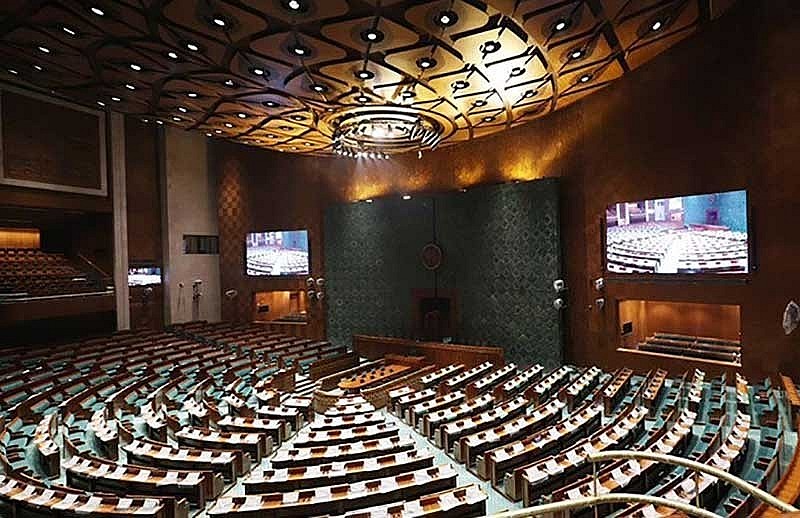 |
| The new Parliament building. Photo: UNI |
A comprehensive study conducted by five prestigious Indian Institutes of Management (IIMs) offers an insightful analysis of the transformations witnessed by Indian citizens over the last five years.
This collaborative effort between the IIMs of Rohtak, Lucknow, Indore, Calcutta, and Ahmedabad delves into a wide range of socio-economic factors that significantly shape the lives of individuals across various Indian states.
With a diverse respondent pool of 85,326 individuals, including farmers, casual workers, housewives, servicing employees, and students, spread across 22 states, the report aims to unravel the complex evolution of societal attitudes and behaviors.
One of the notable findings indicates a substantial reduction in electricity cuts across India, with a 72% decrease reported between 2019 and 2024. Additionally, significant infrastructure enhancements were observed in states like Uttar Pradesh, Rajasthan, Maharashtra, Gujarat, and Chhattisgarh, particularly in water and electricity supply.
The survey also highlights the positive impact on youth optimism and drug consumption, with Gujarat and Maharashtra leading the way. According to the report, just over two-thirds of respondents (66.02%) noted an increase in youth optimism regarding the country’s development and growth.
Agricultural income has seen a notable rise in Punjab, Haryana, and Kerala, contributing to an impressive overall average increase of 39.9% across India. Kerala, Haryana, and Punjab lead the way with agricultural income increases of 49%, 47%, and 45%, respectively.
The health and well-being of women across India have also shown improvements. 74% of women reported a decrease in sick days over the last five years, with improved sanitation under the Swachh Bharat Mission playing a pivotal role. This led to better health outcomes, particularly for housewives in Gujarat, Maharashtra, Karnataka, and Uttar Pradesh.
The survey also reveals a significant surge in women’s annual savings, attributed to enhanced sanitation, improved healthcare, and the availability of cooking gas.
Entertainment and digital engagement have seen a substantial boost, with a 34% increase in spending. This indicates the growing popularity and penetration of OTT platforms, as well as increased expenditures on movies and sports. The average OTT-video penetration stands at an impressive 69.24%.
Casual workers have also benefited from improvements in the labor market, reporting a substantial 60% rise in income. This is further supported by data gathered from 75 trucking companies, underscoring the positive impact on this sector.
The survey also highlights increased satisfaction with public services, with 68.59% of respondents expressing contentment. States like Uttar Pradesh, Gujarat, and Madhya Pradesh displayed high levels of trust in the government.
Additionally, there has been a notable rise in savings across India due to improved access to cooking gas, better healthcare, and sanitation. The survey reports an annual increase in savings of Rs 12,096 per year.
Haryana and Uttar Pradesh, in particular, experienced significant boosts in annual savings and reductions in sick days. This aligns with the regression analysis, which links improved access to cooking gas and enhanced health and sanitation with a decrease in sick days.
Travel across India has also witnessed improvements, with 69.1% of respondents noting better road travel over the last five years. Rail and air travel have also shown progress, with 62.2% and 70.7% of respondents, respectively, observing enhancements between 2019 and 2024.
The government’s Digital India campaign is recognized as a driving force behind the transformation of the public service ecosystem, leveraging advanced information technology to empower citizens digitally.
In summary, the top five most significant changes in India over the last five years include improvements in sanitation and access to toilets, road and rail travel, power cuts, mobile penetration and digital services, and, ultimately, digital access.



